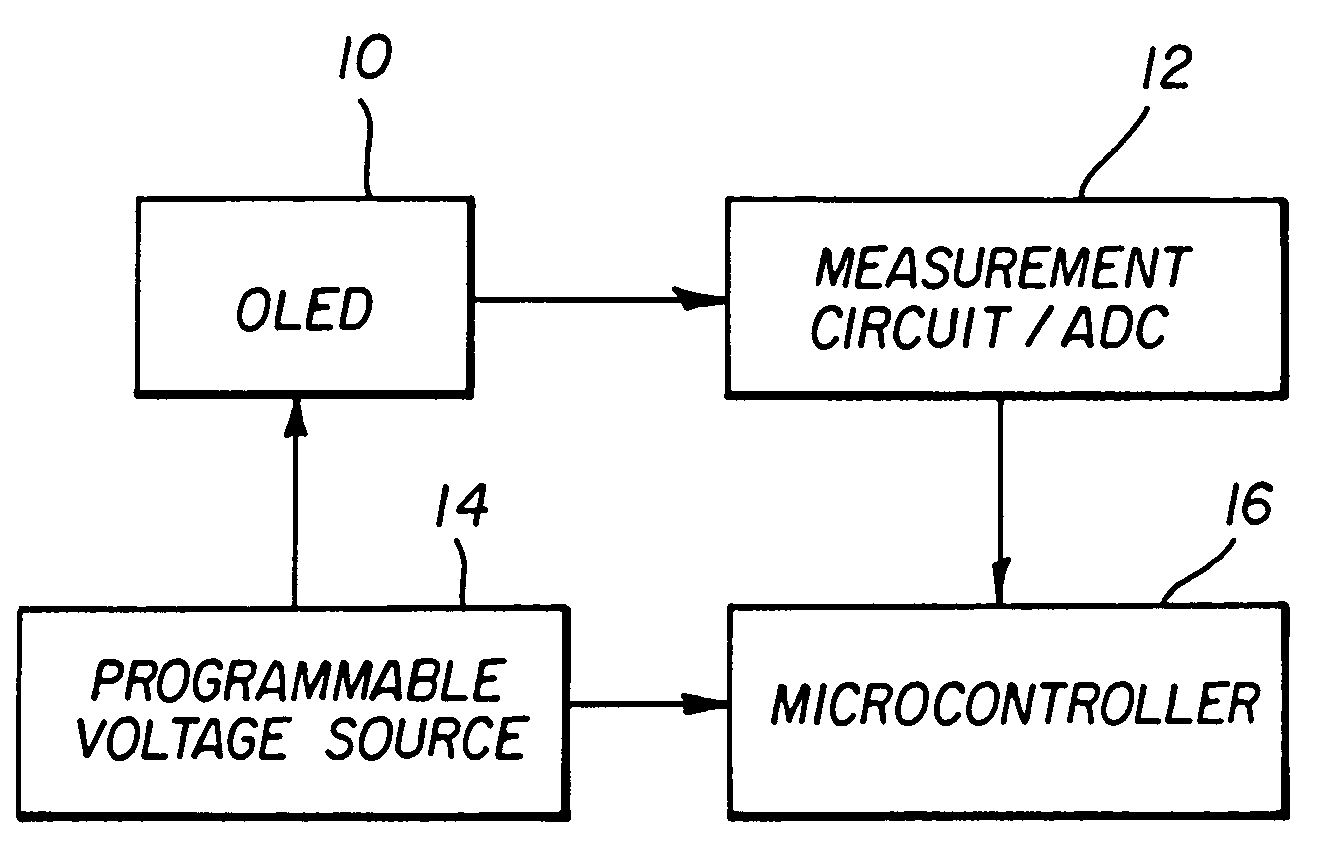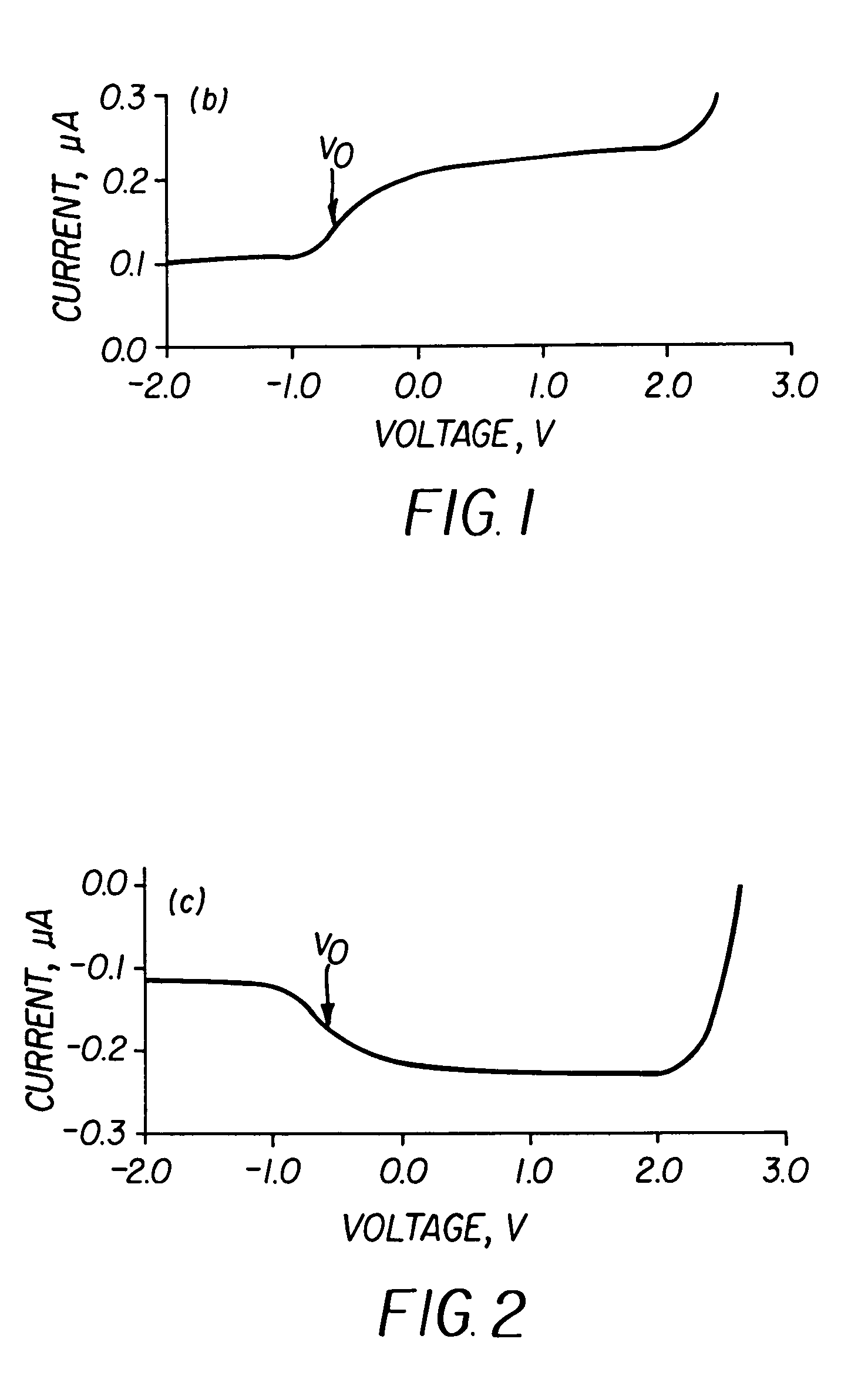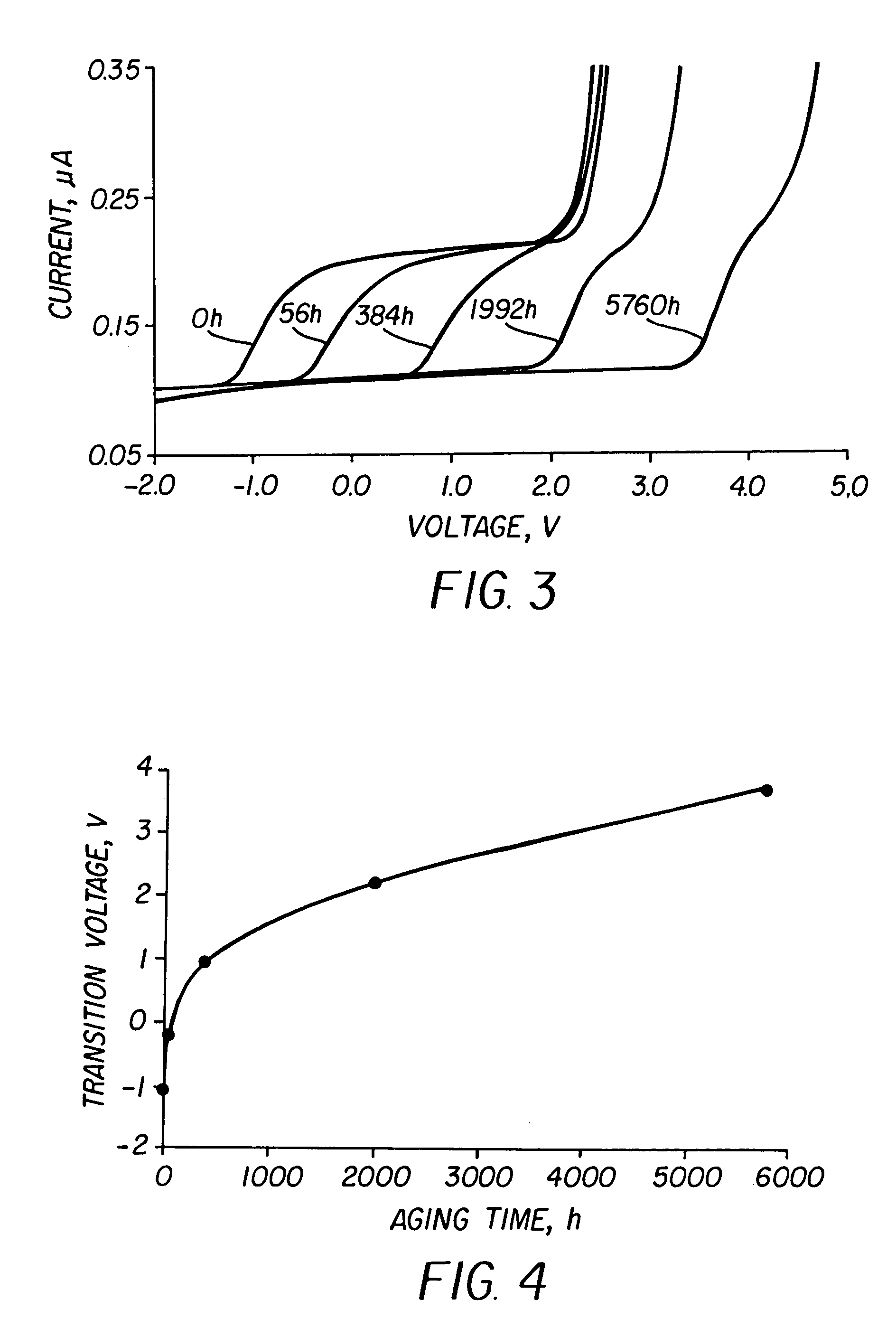Compensating for aging in OLED devices
- Summary
- Abstract
- Description
- Claims
- Application Information
AI Technical Summary
Benefits of technology
Problems solved by technology
Method used
Image
Examples
Embodiment Construction
[0028]FIG. 1 shows linear sweep voltammogram, or linear-ramp current-voltage (I-V) measurements, of a typical ITO|NPB(750 Å)|Alq3(750 Å)|Mg:Ag OLED device. In this experiment, the applied voltage (V) is ramped at a constant rate, dV / dt, and the resulting current (I) is recorded. In general, the measured current has two components: a conductive component that would persist with a constant bias; and a capacitive component that is proportional to dV / dt and the differential capacitance. At sufficiently high scan rates (here, 50 V / s) and low applied voltages (here, ≦2.2 V), the current is dominated by the capacitive component. The transition voltage (V0), is operationally defined as inflection points on the I-V curve and identified with an arrow in FIG. 1. A second transition occurs at higher applied voltages, near Vbi, where the conductive component becomes dominant. The similar behavior above ˜2.2 V, regardless of the scan rate, confirms the identification of the transition near this v...
PUM
 Login to View More
Login to View More Abstract
Description
Claims
Application Information
 Login to View More
Login to View More - R&D
- Intellectual Property
- Life Sciences
- Materials
- Tech Scout
- Unparalleled Data Quality
- Higher Quality Content
- 60% Fewer Hallucinations
Browse by: Latest US Patents, China's latest patents, Technical Efficacy Thesaurus, Application Domain, Technology Topic, Popular Technical Reports.
© 2025 PatSnap. All rights reserved.Legal|Privacy policy|Modern Slavery Act Transparency Statement|Sitemap|About US| Contact US: help@patsnap.com



